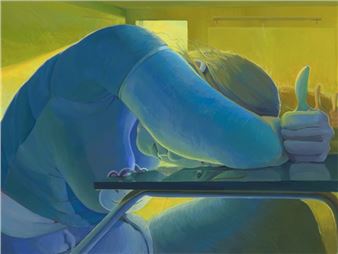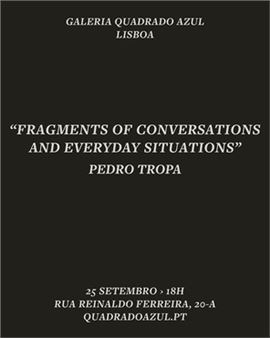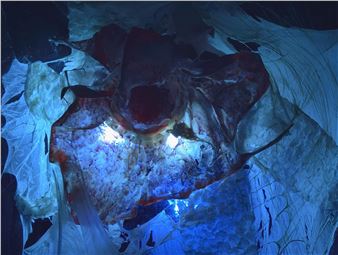Bodies of Resistance
Pedro Cera is pleased to present Bodies of Resistance, a group exhibition with new and existing works.
For centuries, the body and its collective experience have become a site of political discourse, struggle, and regulation. It has been a central focus of political power, ideology, and control. One of the ways modern societies exercise power and control over populations is by managing their biological and physiological aspects, establishing a direct relationship between power, knowledge, and the body in contemporary society, thus making it also one of the most powerful tools of modern governance and societal control.
A fragmented sense of identity has replaced the idea of a stable, unified self, typical for the pre-modern. The body has been transformed into a complex and multifaceted self, shaped by various social, cultural, and technological influences. These transformed, fragmented, or even absent
bodies, despite their pervading vulnerability, have served as a strong instrument of resistance to the interpretation of established historical narratives and prevailing political doctrines, opening paths to new economies, ways of thinking, being, and social organization.
Placed in a post-apocalyptic future, the exhibition introduces works that take the subject of the body as their point of departure. Envisioning the body’s expansive future, the exhibition aims to emancipate the body from standardization and categorization. Hierarchies defined by gender, sexuality, race, or social class are rendered obsolete. Depicted on the edge of abstraction, as is the case of large-scale paintings by Wynnie Minerva or Xie Lei, and their depiction in various states of transgression, these bodies refuse control and consumption, crossing the violent borders of sexual binarism and opening a path towards social transformation.

Recommended for you
Pedro Cera is pleased to present Bodies of Resistance, a group exhibition with new and existing works.
For centuries, the body and its collective experience have become a site of political discourse, struggle, and regulation. It has been a central focus of political power, ideology, and control. One of the ways modern societies exercise power and control over populations is by managing their biological and physiological aspects, establishing a direct relationship between power, knowledge, and the body in contemporary society, thus making it also one of the most powerful tools of modern governance and societal control.
A fragmented sense of identity has replaced the idea of a stable, unified self, typical for the pre-modern. The body has been transformed into a complex and multifaceted self, shaped by various social, cultural, and technological influences. These transformed, fragmented, or even absent
bodies, despite their pervading vulnerability, have served as a strong instrument of resistance to the interpretation of established historical narratives and prevailing political doctrines, opening paths to new economies, ways of thinking, being, and social organization.
Placed in a post-apocalyptic future, the exhibition introduces works that take the subject of the body as their point of departure. Envisioning the body’s expansive future, the exhibition aims to emancipate the body from standardization and categorization. Hierarchies defined by gender, sexuality, race, or social class are rendered obsolete. Depicted on the edge of abstraction, as is the case of large-scale paintings by Wynnie Minerva or Xie Lei, and their depiction in various states of transgression, these bodies refuse control and consumption, crossing the violent borders of sexual binarism and opening a path towards social transformation.

 ARTISTS
ARTISTS
















